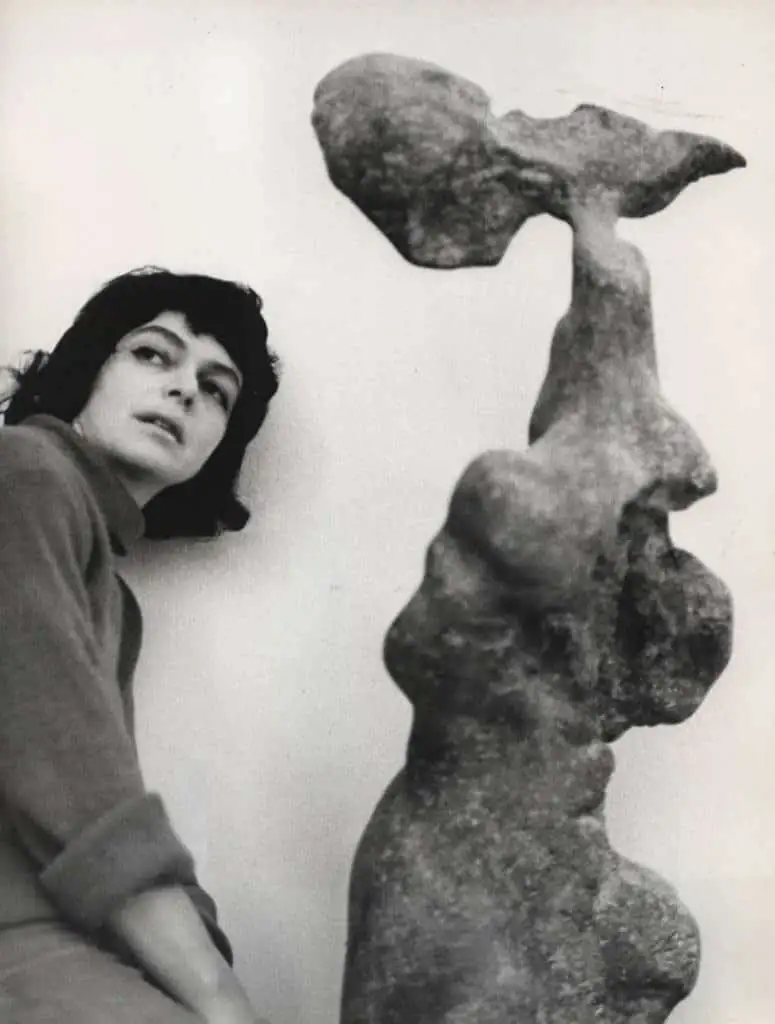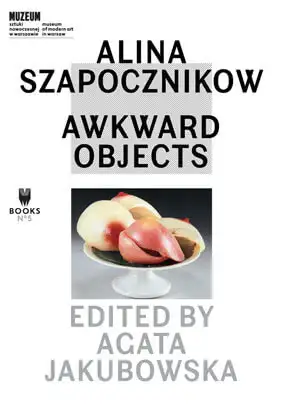
Alina Szapocnikow, Dessert III (1971)
From the collection of Piotr Stanistawski
Photography by Roland Schmid, courtesy of the collection of Piotr Stanistawski
One of the forerunners in this field was Polish-Jewish sculptor Alina Szapocznikow (1926–1973) whose radical work explored the fragility of the human body, memory, and personal trauma through innovative and often unsettling forms. Coinciding with the social upheaval of the 1960s and 1970s, Szapocznikow pioneered a unique, experimental, visual vocabulary, expressing her inner subjective reality through the three-dimensional representation of the human body. Melding surrealism, feminism, and post-war existentialism, Szapocznikow's oeuvre remains one of the most visceral, emotionally charged, and formally groundbreaking in 20th-century art. Though under-recognised during her lifetime, her legacy has grown significantly in recent decades, as contemporary audiences and institutions re-examine her bold approach to sculpture and her profound reflections on mortality, suffering, sensuality and a recasting of the established, historically male-dominated sculptural tradition.

Alina Szapocnikow with her work, Naga (1961)
The Alina Szapocznikow Archive / Piotr Stanislawski / National Museum in Krakow
Photograph by Marek Holzman, courtesy of the Alina Szapocznikow archive / Piotr Stanislawski / National Museum in Krakow
Born in Poland in 1926, as a teenager Alina Szapocznikow would endure and survive the harrowing experience of being interned in several concentration camps during the Holocaust. These traumatic years left an indelible mark on her psyche and would later inform the somatic intensity and existential themes of her art. After the war, she studied sculpture in Prague and later at the École des Beaux-Arts in Paris. At this early stage in her artistic career, Szapocznikow was influenced by classical and modernist traditions, particularly the figurative styles of Auguste Rodin and Constantin Brâncuși. However, she would soon depart from academic conventions, driven by a need to give voice to internal (and often taboo) experiences, especially the vulnerability and ephemerality of the human body.

Alina Szapocnikow, Tumors Personified (1971)
Photograph by Zacheta, courtesy of Zachęta – National Gallery of Art, Warsaw
Moving back to Poland in the early 1950s, Szapocznikow would spend ten years behind the ‘Iron Curtain’ before returning to Paris in 1963. Diagnosed with breast cancer in 1968, her final works, including her famous ‘Tumour’ sculpture series, revolved around her inevitable death after a life of trauma. This series of sculptures directly confronted her battle with cancer; rather than concealing her illness, Szapocznikow made it central to her art. Casting bulbous, lumpy forms, Szapocznikow challenged the idea of the body as an ideal, offering literal and metaphorical representations of the body’s betrayal and underscoring the theme of impermanence that runs throughout her work.

'Awkward Objects' (2009)
Design by Ludovic Balland, published by the Museum of Modern Art, Warsaw
Through casts of the human body – and in particular her own body – Szapocznikow intended to preserve the impermanence of the body as a source of pain, trauma and truth. For many years Szapocznikow remained little-known outside her native Poland (which she represented at the 31st Venice Biennale). But in 2009 Szapocznikow was finally propelled onto the international stage when the Museum of Modern Art in Warsaw hosted an exhibition entitled ‘Awkward Objects’, showcasing her work alongside that of Louise Bourgeois. Even then, Polish curator Anda Rottenberg suggests that the significance of Szapocznikow’s life and practice continues not to be fully realised: ‘Louise Bourgeois gained recognition only a few years ago...Alina Szapocznikow is still waiting for the place which is her due.’
Szapocznikow’s early works retained a relatively traditional sculptural language, focusing on the human form rendered in bronze or stone. Yet even within these classical materials, her work stood out for its expressive rawness and psychological depth, with many of her works featuring emotionally resonant representations of wounded or decaying bodies or missing limbs. Her artistic breakthrough came in the 1960s when she began experimenting with industrial and synthetic materials – particularly polyester resin and polyurethane foam. These new mediums allowed her to create sculptures that were both more intimate and confrontational. She began by casting parts of her own body – lips, breasts, bellies, and hands – fragmented and reassembled into hybrid forms. The use of translucent resins gave her sculptures a fleshy, ghostly quality, further emphasising their bodily immediacy and transience.

Alina Szapocznikow,' Lampe Bouche' (1966)
Coloured polyester resin, light bulb, electrical wiring and metal frame (59.7cm high)
Photography by David Brook, courtesy of LYRA Foundation
LYRA is proud to hold in our collection a work from Szapocznikow’s ‘Illuminated Lips’ (1966) series. ‘Lampe Bouche’(1966), made from coloured polyester resin, is emblematic of this period in the artist’s practice. This surreal, functional sculpture – configured as a lamp – is a provocative fusion of body and object, casting a disembodied mouth in translucent resin, wired to emit a feminine glow. The sculpture transforms a sensual, intimate body part into a functional household lamp, blurring boundaries between eroticism, utility, and surrealism. By fragmenting and fetishising the female form, Szapocznikow critiques both consumer culture and the objectification of women, juxtaposing eroticism with objectification, beauty with the grotesque, and utility with intimacy. ‘Lamp Bouche’ exemplifies the artist’s radical approach to sculpture: bodily, uncanny, and fiercely confrontational, this 1966 work foreshadows and highlights the concerns central to feminist art in the decades that followed.

'Alina Szapocznikow: Sculpture Undone, 1955-1972' (2012)
Courtesy of the Hammer Museum
Fortunately, the rediscovery of Szapocznikow’s oeuvre in the late 20th and early 21st centuries coincided with broader critical shifts in art history that sought to recover the contributions of women, Holocaust survivors, and artists working outside the dominant art market circuits. The artist’s work has subsequently been widely reassessed and celebrated for its pioneering engagement with themes of trauma, identity, and the body. Major retrospectives – including the 2012 traveling exhibition ‘Alina Szapocznikow: Sculpture Undone, 1955–1972’ (a collaboration between the Museum of Modern Art in NYC, the Hammer Museum in LA and WIELS Contemporary Art Centre in Brussels) – brought her work to international attention. Szapocznikow is now recognised as one of the most important female sculptors of her generation, and she deserves her place in the canon alongside Louise Bourgeois, with these two women sharing thematic resonances in their focus on the body as a site of memory, decay, and transformation.

Alina Szapocznikow, Petit Dessert | (1970-71)
Colored polyester resin and glass (8 x 11 x 13 cm)
Photograph by Thomas Mueller, courtesy of The Estate of Alina Szapocznikow / Piotr Stanislawski / Broadway 1602, New York / Galerie Gisela Capitain, Cologne.
Szapocznikow’s art continues to resonate in an era increasingly preoccupied with questions of embodiment, identity politics, and the ethics of representation. In a world that seeks to sanitize or aestheticise suffering, Alina Szapocznikow dared to sculpt it – viscerally, vulnerably, confrontationally and with startling honesty. Her legacy is not just in her radical forms, but in her insistence on making visible what society prefers to forget: the body in pain, the beauty of imperfection, and the art of survival.